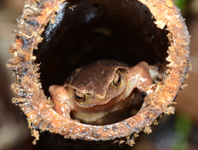Abstract
We describe here Cephalotes specularis n. sp. (Hymenoptera: Formicidae: Myrmicinae: Cephalotini) based on minor and major workers, gynes and larvae from Uberlândia, Minas Gerais state, Brazil. On morphological and molecular grounds, this new species belongs to the C. fiebrigi + C. bruchi species complex, of which there are 11 previously described species (one in C. bruchi group and 10 in the C. fiebrigi group). All members of these groups are found in, or are limited to the South American “arid diagonal”, comprised of the Argentinian Chaco, the Cerrados of central South America, and the Brazilian northeastern caatingas. Workers of C. specularis n. sp. have an extremely shiny gaster which is mirror-like, notwithstanding its sparse covering by minute hairs. This species engages in a form of resource-based social parasitism of the host ant Crematogaster ampla (Myrmicinae: Crematogastrini). Cephalotes specularis foragers move freely in the dense traffic of Crematogaster ampla foraging trails. They exhibit highly atypical body posturing for turtle ants, which makes them hard to distinguish from the Crematogaster foragers.

